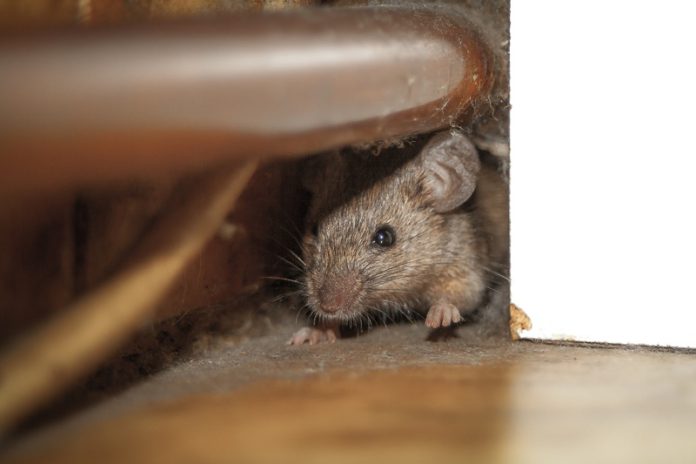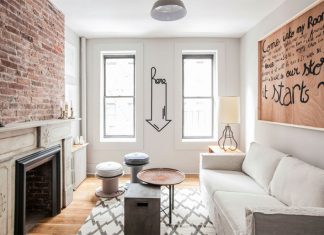Rats are typical pests that can cause severe damage inside and outside your property. They are ok to make a nest, whether in your interior or exterior space. Finding the nest’s location is the first step to successfully removing the rat infestation. Though, this might not be the most straightforward task at all. Don’t close this page to get proper instructions on getting rid of rats.
What are the signs of a rat infestation?
The truth is that it’s not rocket science to figure out that you have rats at home or nearby your property. The rodents are careless, messy and quite nasty in their gnawing habits. Here are some of the most common signs of rat infestation to look for:
- They are black in nuance and bigger than mice in size. What’s also typical about them is that they are literally everywhere. The most common place, though, to find droppings is nearby the location you usually leave food at your disposal.
- The rats love burrowing, and sometimes they might get inside your house or the garage this way. If you see big holes near your home, it might be a mole, but it could also be a rat.
- Unlike mice that don’t leave hairs around, rats do. They are usually grey, but sometimes black or brown, too.
- Rubbing marks. Such is left on the walls. These signs are made in the name of easier navigation for the rats as they have poor eyesight.
- One of the most common signs of a rat infestation is the nest. The rodents will surely create one once they feel welcomed in the property or location.
How to recognise a rat nest?
You can easily track the rat nest by using the signs from the list above. On the other side, this typical proof of rat invasion can be everywhere on your property. Most of the time, the rodents prefer to create their shelter in a spot with enough “building materials”. In other words, the more items you have and the bigger the clutter, the more possible you can find a rat nest there. Until you reach the concrete location, you might encounter other signs of rat infestation, including torn cables, scratched wooden items, chewed electrical cords, etc. If you take your dog or cat for an inspection, you will receive extra assistance finding the nest location. The closer your pet gets to it, the stranger its behaviour will become. Last but not least, remember that a rat nest looks quite similar to a traditional bird nest. It’s just rats don’t use leaves and twigs but everything found around your living space, including garbage.
Typical hotspots for rat nests in the house
Experts have determined traditional concrete areas with signs of rat infestation. And in 90% of them, you will probably see a nest. Check them out below to know where to look for them.
Lofts and attics
These places are favourites for the rats for two main reasons. First of all, they are not 24/7 occupied by people, so they are peaceful enough, and second of all – it’s usually a huge mess here. In the lofts and the attics, the rodents find many old items that are great for building a nest. Besides, it’s dark and safe in here for them.
In the basement
Similarly to the loft and the attic, the basement is a gloomy place that serves the role of a storage spot for homeowners. But what makes the basement even more attractive for the rats is that usually there’s food here. People love storing their jars in here, and the rodents have sharp enough teeth to gnaw the metal lids and have a treat with your supplies.
Inside the garage
The garage is another place supposed to serve one thing but usually becomes the homeowner’s warehouse. As a matter of fact, it’s also one of the hottest rat entry points to your living space. It’s common for a rodent to build a nest in the garage and move inside the building once the weather worsens.
In the walls
Nothing can stop a rat from having a nest in the walls in case of a cavity. This is a very peaceful and inaccessible place for rodents to hide, so as long as the cavity allows it, a nest might soon be made between the walls.
In closet clutter
The more chaotic a living space is, the more possible the rat infestation becomes. The closet is a domestic area where the clutter rules. It’s common for homeowners to leave this space for the end of the cleaning routine, which is why it usually never gets tidied up. And as you can already guess, thus, the closet becomes the rat’s favourite place to make a nest.
In kitchen cabinets
It doesn’t matter how clean and tidied up they are. If the cabinets are full of food, the rats will feel attracted by them. Yet, if your kitchen is a mess and food sources are everywhere, a rat invasion is even more possible.
Under sinks
Rats love moving around the drain system. The canalisation is a very special place for them – it’s dirty, gloomy and away from human intruders. However, when the rodents feel hungry, they start moving along the broken pipes, and thus, they get nearby your kitchen sink area. Making a nest here is a very common rat habit.
Inside insulation
Crawling around the insulation is another typical rat’s hobby. When there’s a gap between the insulation and the floorboards, the rodents are willing to make their nests here. They get more motivated if there’s garbage, such as boxes, clothing items, newspapers, etc., nearby.
How to deal with rat nests in the house
Ok, let’s imagine you have just found a rat nest. You are 100% sure that it’s made of a rodent. The rat infestation is guaranteed, so it’s time for action. Here’s what to do when you spot a rat nest in your living space:
- If you want to deal with the rat, don’t destroy its nest. We understand that your first angry reaction would be to break it immediately. However, note that if the nest is not damaged, the rat will return to it. Consider adding a trap to catch the invader.
- Using bait or poison is another good idea to fight the rat infestation. Attract the rodent by mixing the chemicals with some tasty food.
- Be patient and wait for the rat to come back to the nest. These creatures are eager to travel far away from their homes to look for food. If the nest is not placed in a spot where food is available, the rodent might go outside the house and then return.
- If you don’t know how to get rid of rats and poison, baits or traps are not options for you. Better call the local rat control Explain to them that you’ve spotted a nest, and they will return as soon as possible to help you.
Final Thoughts
Finding the rat nest is a big deal, but unfortunately, it does not end your war against the rodents in your home. Make sure to take action against the rat infestation as soon as possible.















